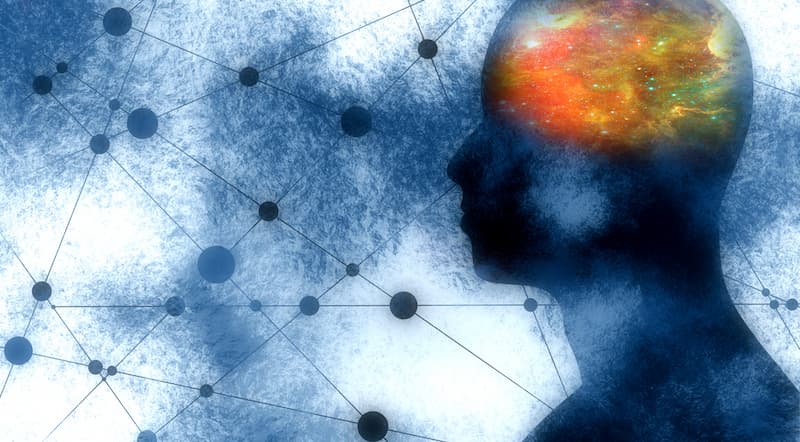back
Overcoming the Stigma of Mental Health
Jan 15, 2021

What Is the Stigma of Mental Illness?
The word “stigma” comes from the Latin word meaning brand or mark. It refers to some identifying feature of the bearer of the mark, generally one that signifies something unsatisfactory or negative. Historically, tradition indicated that the person bearing a stigma did something wrong or evil to be cursed with the mark. A stigma is similar to and may evolve from a negative stereotype. For example, the idea of people living with mental illness as unpredictable and violent is a stereotype that contributes to mental health stigma. While the media feeds this misrepresentation, in reality, crime statistics indicate that people living with mental illness are much more likely to be victims of crime than offenders.
The stigma related to mental illness takes three forms.
- Social stigma comes from the outside world. It includes prejudice and discrimination against those living with mental illness. Social stigma can be direct and open or very subtle and even unintentional.
- Structural stigma involves the government and other societal structures that make it difficult for those with a mental health condition to live happy and productive lives. For example, if your state Medicaid coverage limits benefits for therapeutic services, that is a form of structural stigma.
- Self-stigma is also called perceived stigma, and it is an internal experience. It is the process through which people experience or perceive the stigma associated with the diagnosis and the stigma and discrimination that comes their way.
When someone has a medical condition, such as cancer or diabetes, no one would ever tell the patient to “snap out of it” or “just get over it.” Yet, that is a common reaction to mental health problems. Many think that the patient chooses to be depressed or that the behavior is for attention. They don’t understand that the internal pain of a mental illness is just as real as the physical pain of a more visible condition. This lack of understanding leaves people with mental illnesses feeling maligned and misunderstood. This kind of judgment is what people refer to when they talk about the stigma of mental illness.
Why Is Stigma in Mental Health Harmful?
Fear is one of the main contributors to the stigma of mental health diagnoses. People develop prejudicial attitudes toward things they fear or don’t understand. This experience negatively affects the overall health of those dealing with a mental illness.
- Consumers with a mental health diagnosis often feel lonely and isolated. According to the Mental Health Foundation, nine out of ten people who are consumers of mental health services feel that mental health stigma makes their lives more difficult.
- Even when mental health problems are treated appropriately, consumers still deal with the stigma.
- Bullying and harassment are real experiences for those with a mental health condition.
- People with mental health issues may struggle with self-concept and worry about how others see them. They may fear that nothing will ever get better.
- The stigma surrounding mental illness can make people afraid to seek help. When a person needs help with something, but others question whether the condition is real, they may be left feeling weak for seeking treatment.
How Does the Stigma Lead to Discrimination?
Stigma and discrimination are a reality for many people living with mental illnesses. Sometimes it’s very open and direct, and in other situations, it’s more subtle. Here are some examples.
- Biases in education are common. Discrimination at the elementary, secondary, and college-level is illegal. These institutions must make every effort to accommodate disabilities, including mental health diagnoses. According to the Mayo Clinic, clear communication is essential. If teachers and administrators don’t know about or understand the nature of a disability, they won’t know how to accommodate the learner.
- Discrimination and bias in employment and housing are commonplace, though both are illegal. For example, a national survey found that while most respondents voiced support for those with a mental health condition, half of them would oppose having a mental health treatment facility in their neighborhood. People with a mental illness are more likely to be homeless due to chronic unemployment and difficulties finding work. They are also more likely to be incarcerated.
- Mental health consumers often face stigma and discrimination, even in financial situations. For example, many people find that health insurance doesn’t cover mental and behavioral health treatments at the same level as other medical conditions.
How Can We Reduce the Stigma of Mental Illness?
The first step to reducing the stigma associated with mental illness is understanding. Mental illness has many causes, but it is not a personal failing or a choice. The Centers for Disease Control (CDC) states that mental illness is one of the most common health issues. Americans face. Some mental health problems have a genetic component, while others are biological. Childhood trauma, violence, and stress can contribute, as well.
In some cases, we don’t know what causes a mental health challenge, which leaves some people skeptical of its existence as a real medical condition. Regardless of the cause, though, mental health conditions are medical diagnoses and should be treated as such. Here are a few things that are important to understand.
- Recognize your own biases and how your own experiences influence them. Look for evidence of those biases in your vocabulary and how you speak to others. Don’t use mental health terms such as OCD or schizophrenia in a flippant or joking manner.
- Be inclusive. It is illegal to discriminate based on a mental illness, but it’s also wrong and unethical.
- Challenge incorrect information and stereotypes about mental health when you hear others say wrong things. Call out hurtful and offensive language when you hear it to educate people about the effects of stigma and mental illness.
- Focus on the whole person as a human being deserving of dignity and respect. A mental health diagnosis may be part of your life, but it doesn’t have to be your whole life.
- Advocate for people with mental illness whenever and wherever you can. You might consider writing a letter to the editor of a news publication or publishing an article on a blog calling attention to the issue. Never shy away from the hard conversations on this topic.
- Support legislation and candidates for office that will help end the stigma of mental illness and make services more readily available.
Where Can I Learn More About the Stigma of Mental Illness?
Support groups, such as the National Alliance on Mental Illness (NAMI), operate in local communities offering many online and in-person resources to help reduce mental illness stigma in communities and families. They work to educate the general public about the available resources. You can also reach out to schools, veterans organizations, and advocacy groups for assistance.
At MHS DBT & Mental Health Services, we are happy to work with families to address the stigma of mental illness and identify strategies for reducing its impact on their lives. In addition to educational programming, we also offer a full range of treatment services for clients at all stages of life. We use evidence-based practices with measurable results and a demonstrated history of effectiveness. Contact us online or call (952) 835-2002 to learn more about how MHS DBT & Mental Health Services can help you or someone you love.
_______
Image Credit: Shutterstock/ GrAl

